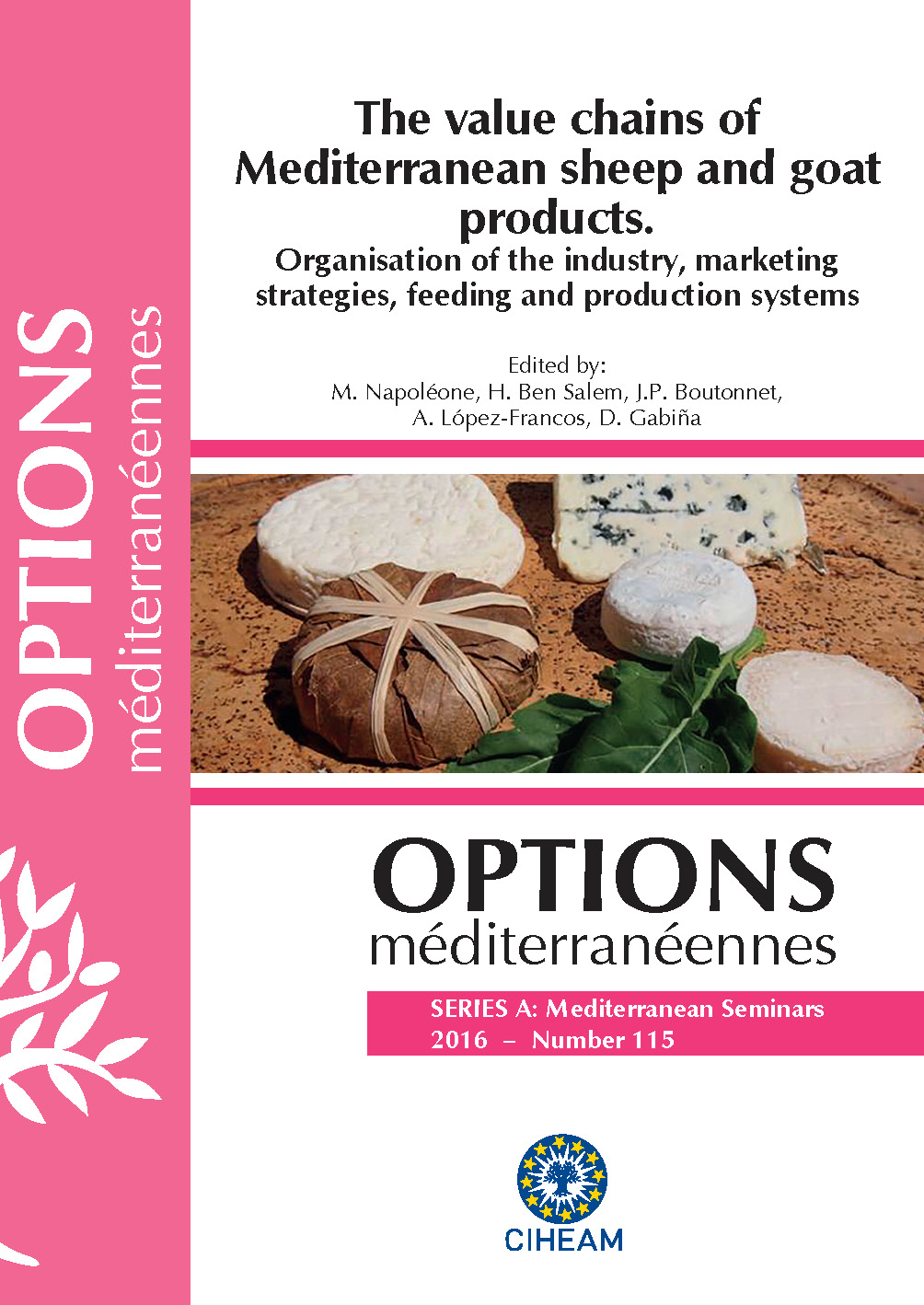| Article précédent | p. 649-653 | Article suivant |
Production pastorale et laitière au niveau d’un élevage extensif au nord du Maroc
Au nord du Maroc, l’espace sylvopastoral est une ressource fourragère gratuite qui contribue à l’affouragement régulier du cheptel caprin. Cette étude a été menée au niveau d’un élevage extensif de caprin laitier (parcours Bouzahri). L’objectif est d’évaluer l’apport pastoral du parcours et son effet sur la production et la qualité du lait. La biomasse, la diversité floristique et la valeur nutritive ont été déterminées. Soixante-dix espèces pastorales ont été comptabilisées. La biomasse produite a été estimée à 4963 KgMS/ha, composée à 89% par Calicotome villosa, Cistus crispus, Erica arborea, Inula viscosa, Lavandula stoechas, Olea europea et Pistacia lentiscus. Calicotome villosa a enregistré la plus forte teneur en énergie et en protéines (PDI) avec 0,62 UFL/kg MS, 0,52 UFV/kg MS et 52 g/kg MS de protéines. L’offre fourragère a été estimée à 2250 UFL/ha d’énergie et 72,6 kg/ha de protéines, est évaluée à 450 €/ha. Cet élevage, a permis une production laitière de 55 kg/lactation/chèvre contre 51 kg/lactation/chèvre pour un élevage intensif (témoin). L’affouragement des caprins sur le parcours a permis de limiter la charge alimentaire et une meilleure production laitière qui reste qualitativement faible. La supplémentation, afin d’améliorer la qualité des produits laitiers, s’avère une nécessité.
In Northern Morocco, silvopastoral area was a free fodder resource that contributes to regular feeding of goat. The study was conducted in extensive farming of dairy goat (Bouzahri pasture). The objective is to estimate a pastoral contribution of pasture and its effect on production and milk quality. Biomass, floristic diversity and nutritional value were determined. A total of seventy pastoral species were recorded. The biomass production is estimated to 4963 kg DM/ha, composed of 89% by Calicotome villosa, Cistus crispus, Erica arborea, Inula viscosa, Lavandula stoechas, Olea europea and Pistacia lentiscus. Calicotome villosa has the highest energy and protein (PDI) levels with 0.62 UFL/kg DM, 0.52 UFV/kg DM and 52 g/kg DM of protein. The forage supply is estimated to 2250 FU/ha of energy and 72.6 kg/ha of PDIN, is evaluated at 450 euro/ha. In extensive farming, milk production is estimated to 55 kg/lactation/goat against 51 kg/lactation/goat in intensive farming (control). Goats feeding on pasture allows to reduce alimentary charge and better milk production that remains low qualitatively. Supplementation, to improve quality of milk products, is necessary.
- [ Afficher ]
- [ Télécharger ]
- [ Exporter la citation ]
Vous pouvez télécharger la citation au format :
- [ Imprimer ]
-
Mots-clés
BIOMASSE, CAPRIN, MAROC, PARCOURS, PRODUCTION LAITIERECiter cet article
Chebli Y., El Otmani S., Hilal B., Cabaraux J.F., Chentouf M. Production pastorale et laitière au niveau d’un élevage extensif au nord du Maroc. In : Napoléone M. (ed.), Ben Salem H. (ed.), Boutonnet J.P. (ed.), López-Francos A. (ed.), Gabiña D. (ed.). The value chains of Mediterranean sheep and goat products. Organisation of the industry, marketing strategies, feeding and production systems. Zaragoza : CIHEAM, 2016. p. 649-653. (Options Méditerranéennes : Série A. Séminaires Méditerranéens; n. 115). Joint Seminar of the Subnetworks on Nutrition and on Production Systems of the FAO-CIHEAM Network for Research and Development in Sheep and Goats, 2015/06/16-18, Montpellier (France) . http://om.ciheam.org/om/pdf/a115/00007347.pdf



